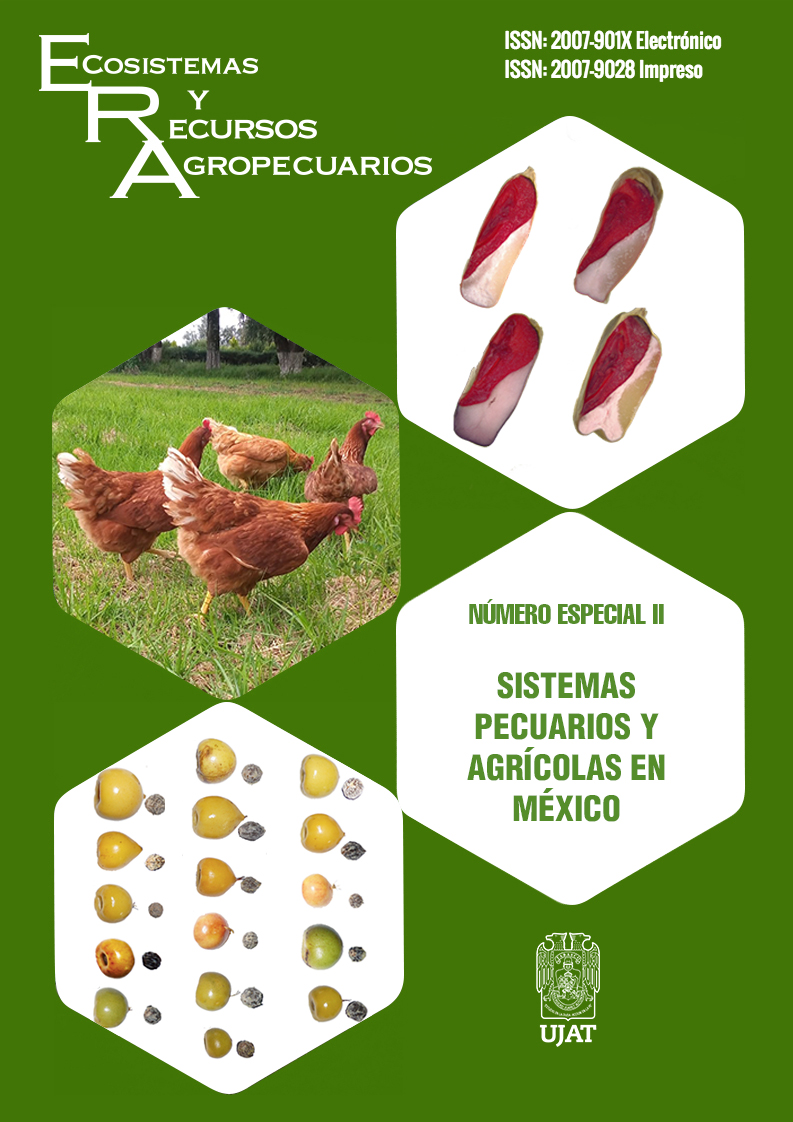Chemical composition of oat (Avena sativa L.) crop components, Chihuahua variety
DOI:
https://doi.org/10.19136/era.a8nII.2966Abstract
For its importance as a partially characterized strategic winter crop, the forage oat Chihuahua variety was studied. In leaf, stem, weed, panicle, and whole plant, neutral detergent fiber (NDF), acid detergent fiber (ADF), crude lignin (CL), ashes (Ash), crude protein (CP), and crude fat (CF) were determined (g 100 g-1), and their corresponding yields (kg ha-1) were assessed. The CP in leaf, stem, weed, and the whole plant decreased (p < 0.05) while NDF, ADF, and CL contents increased (p < 0.05) as cutting age progressed. The CF content increased with age in leaf and panicle (p < 0.05), but no changes were observed in stem and weed (p > 0.05). In panicle, the content of NDF strongly decreased, 21.6% (p < 0.05), and that of CP decreased slightly, 1.0% (p < 0.05), while those of CL and CF increased (p < 0.05) as age progressed. A maximum CP yield was detected in leaf and weeds at 75 days of age while in stem the maximum CP yield occurred at 90 days. For the oat forage, Chihuahua variety does not contain so much fiber and in order that the content and yield of protein are not so low, it is suggested to harvest this plant between 75 and 90 days of age.
Downloads
Downloads
Published
Issue
Section
License
Copyright (c) 2021 Ecosistemas y Recursos Agropecuarios

This work is licensed under a Creative Commons Attribution-NonCommercial-ShareAlike 4.0 International License.
Aviso de copyright
Los autores que se envían a esta revista aceptan los siguientes términos:
una. Los autores conservan los derechos de autor y garantizan a la revista el derecho a ser la primera publicación del trabajo con una licencia de atribución de Creative Commons que permite a otros compartir el trabajo con un reconocimiento de la autoría del trabajo y la publicación inicial en esta revista.
B. Los autores pueden establecer acuerdos complementarios separados para la distribución no exclusiva de la versión del trabajo publicado en la revista (por ejemplo, en un repositorio institucional o publicarlo en un libro), con un reconocimiento de su publicación inicial en esta revista.
C. Se permite y se anima a los autores a difundir su trabajo electrónicamente (por ejemplo, en repositorios institucionales o en su propio sitio web) antes y durante el proceso de envío, ya que puede conducir a intercambios productivos, así como a una cita más temprana y más extensa del trabajo publicado. (Consulte El efecto del acceso abierto).


